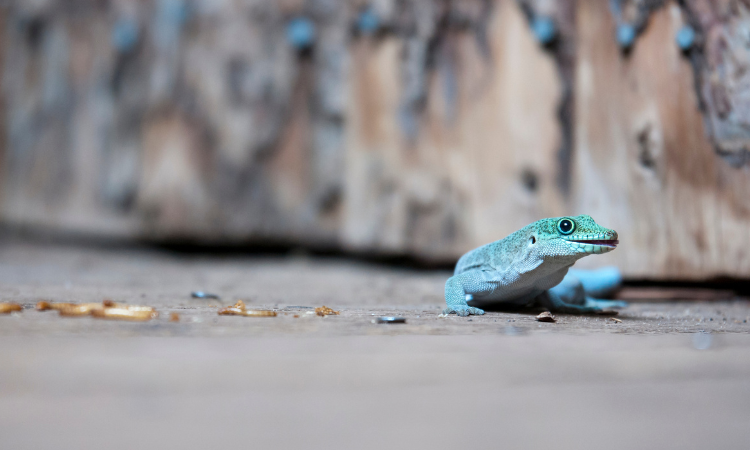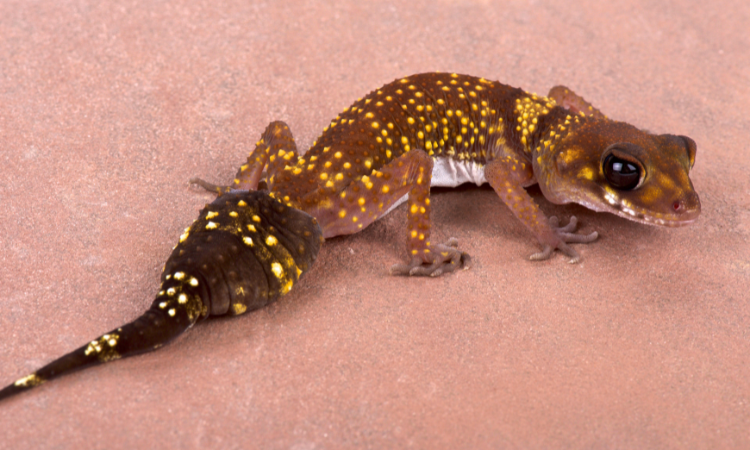Have you ever seen a gecko lose its tail? If so, have you wondered if it hurts them? Losing a tail is a common defense mechanism for many lizards, and geckos are no exception. However, the popular belief that losing a tail causes physical pain has been contested. In this article, we will explore whether a gecko really experiences any pain when it loses its tail.

Geckos are fascinating creatures that have unique defense mechanisms, one of which is the ability to detach their tails when threatened by predators. While this may seem like a traumatic experience, research has shown that it does not typically cause the gecko significant harm.
Why do geckos lose their tails?
The process by which geckos detach their tails is called autotomy. When a gecko feels threatened, it can voluntarily contract the muscles in its tail, causing it to break off at a weak point along the tail. This allows the gecko to escape while the detached tail distracts the predator.
Does it hurt for a gecko to lose its tail?
A gecko’s tail is full of nerves and blood vessels, so when it detaches, the gecko feels a sharp pain. While losing its tail is undoubtedly stressful for a gecko, it’s not deadly. In fact, many species of geckos can regenerate their tails over time. So if your pet gecko happens to lose its tail, don’t worry – it’ll eventually grow back.
While losing a tail may seem like a painful experience, geckos are actually well-adapted to this process. The tails are designed to detach easily and without causing pain or injury to the gecko. In fact, the gecko may not even feel anything as the tail separates from its body.
What happens after a gecko’s tail detaches from its body?
After the tail detaches, the gecko’s body immediately begins to heal the wound. The area where the tail was attached will form a scab, which will eventually fall off, leaving behind a small scar. The gecko will then begin the process of regrowing its tail, which can take several weeks or months depending on the species and the age of the gecko.
The new tail that grows back may not be as long or as fully functional as the original tail. It may also look different, with a different color or texture. However, the new tail can still be used by the gecko for balance and communication with other geckos.
Geckos are more vulnerable to predators after losing their tails
While losing a tail is not harmful to geckos, it can still have some drawbacks. For example, geckos may be more vulnerable to predators while their tails are regenerating, as they may be less agile and unable to escape as quickly. Additionally, some geckos may lose weight or become stressed during the regeneration process.
So, while it may seem like losing a tail is a painful experience for geckos, it is actually a natural and adaptive process that does not typically cause them significant harm. Geckos are well-equipped to detach their tails and regenerate new ones, allowing them to escape from danger and continue living their lives in the wild.
What happens when a gecko loses its tail?
Geckos are known for their unique ability to quickly detach their tails when caught by a predator. This unexpected switch tricks the pursuer and leads to the gecko’s escape.
However, losing their tail comes at a cost. Not only do geckos need energy to regrow a new one, but they also lose valuable fat reserves stored in their original tail, leaving them exposed and vulnerable to predators in the short term.
Thankfully, geckos are resilient creatures, and with rest and plenty of food, they can successfully regrow their tail within weeks or months depending on the species.
How does it feel for a gecko to lose its tail?
For geckos, the loss of its tail can be a traumatic experience. A gecko’s tail is an evolutionary adaptation which helps them to survive in their environment and assists with communication between geckos.
When a gecko loses its tail, it will struggle to move around effectively and quickly as it normally does. This can make geckos feel vulnerable and disoriented as they are unable to escape or defend itself from potential threats as successfully.
The gecko will also no longer be able to connect with other geckos through their signature tail movements, which further impedes their ability to socialize or interact within the gecko community.

The science behind why geckos lose their tails
The gecko is a fascinating reptile often recognized by its distinctive tail and ability to easily scale walls. While geckos are known for their detachable tails, the question of whether it hurts for geckos to lose their tails has been compelling researchers to investigate.
Scientists have found that geckos can drop their tails as a defensive mechanism in situations of extreme danger, such as being confronted by predators.
This behavior helps gecko species survive, yet it involves the actual severing of nerves, muscle, and vertebral elements – certainly causing no small amount of distress for the gecko involved.
Fortunately, geckos have an incredible capacity for regeneration: they can grow new tails over time that look nearly identical to the original one.
What do geckos do with their tails
Geckos are quite a sight, with their bright eyes, swift movements and incredible tails! Geckos famously use their tails to help in climbing, providing balance as they traverse any gaps or rough surfaces.
More interestingly, geckos can also detach their tails in the case of emergency situations. Whether escaping predators or falling off a high surface, geckos are able to detach easily from their tails.
By doing this, geckos successfully distract predators and escape unharmed. Unbelievable creatures in every way!

How can you tell if a gecko is healthy
When assessing the health of a gecko, many factors can indicate whether or not it is healthy. One of the most telling ways to detect gecko illness is to look at its behavior and physical appearance. If a gecko appears slow and clumsy, or lacks energy while moving around, it might be sick.
Additionally, check for signs of wounds and infested fur, as this could point to mites or other ecto-parasites living on the gecko’s body.
Geckos should also be observed for unappetizing eating habits, such as ingesting their own feces- another indicator of gecko sickness.
Last but certainly not least, healthy geckos should have clear eyes without any visible discharge or fogging.
To sum up, losing a tail is an unfortunate and sometimes painful experience for a gecko. It’s important to pay attention and know what to look out for if you suspect your gecko may have lost their tail.
By understanding what happens to a gecko when they lose their tail, how it feels for them, and how you can tell if a gecko is healthy, you can help ensure your pet gets the best care possible with minimal pain or discomfort.
Additionally, it’s important to remember that all geckos are different and may experience different sensations from the same trauma. Being able to spot potential issues quickly and react with care will go a long way toward giving your pet gecko the best life possible.
Related posts:

Hi – I’m Erika, the lead gecko enthusiast here at Geckopedia! I write articles about pet geckos, including what to feed your leopard gecko and how to help your pet gecko live a long, happy life! I graduated with advanced degrees from UC-Berkeley, the University of Southern California (USC) and Indiana University-Bloomington, where I studied Biology and Animal Science. I use my experience to help others learn about gecko care, and I am an advocate for all topics gecko related!
